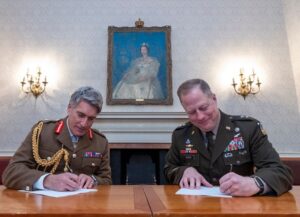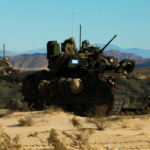
The U.S. Army on Monday signed an agreement with the British Army to work on ensuring interoperability between the two countries’ pursuit of future rotorcraft platforms. Under the new Future Vertical Lift (FVL) Cooperative Program Feasibility Assessment project arrangement, the U.S. and U.K. will share information to advance future rotorcraft development and assess collaboration opportunities related to programs such as the Future Long-Range Assault Aircraft (FLRAA) and the Future Attack Reconnaissance Aircraft (FARA). “As you would expect the British Army…

 By
By 











